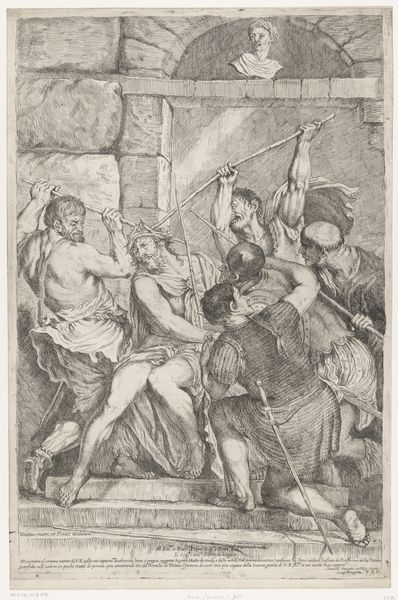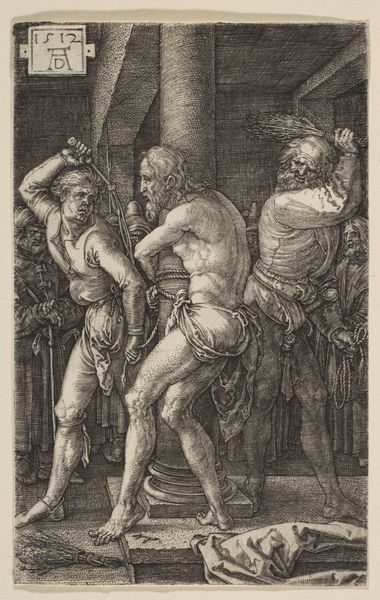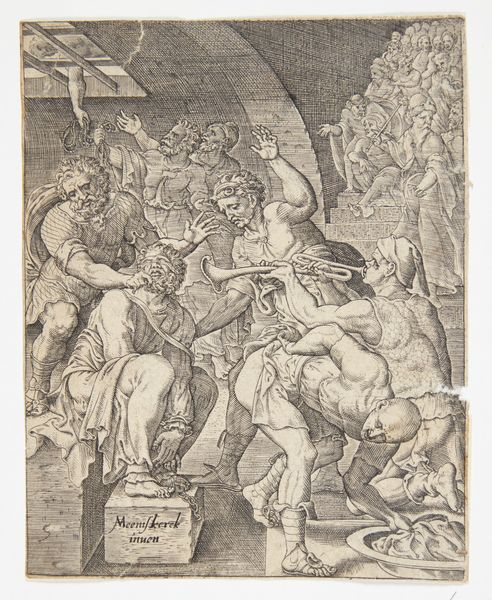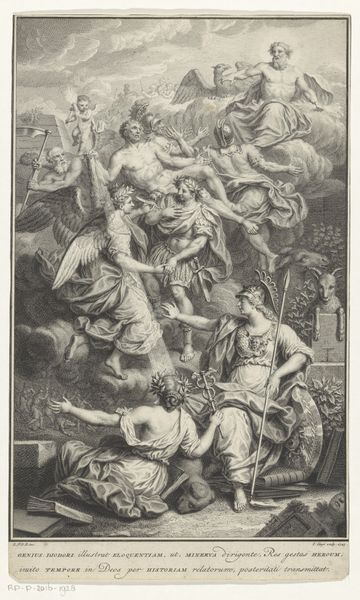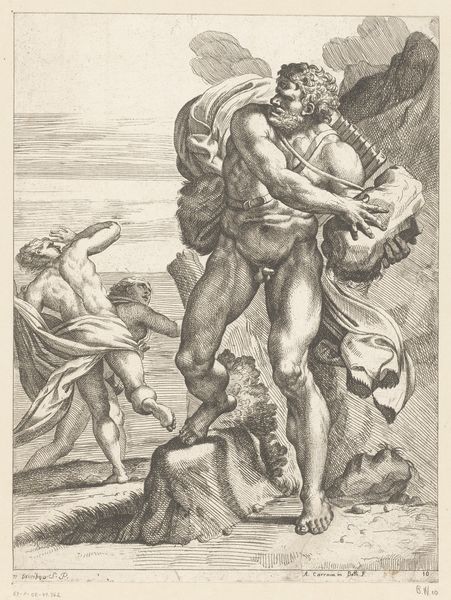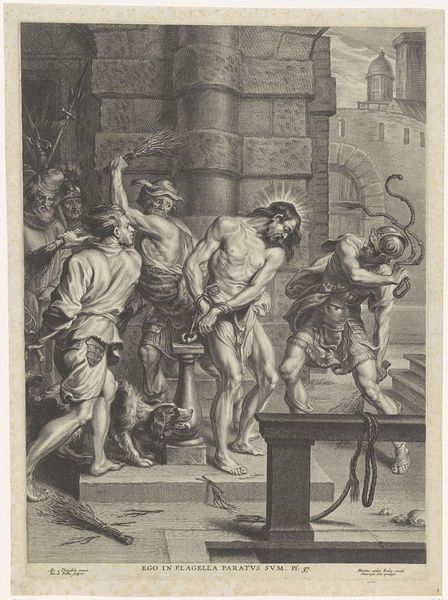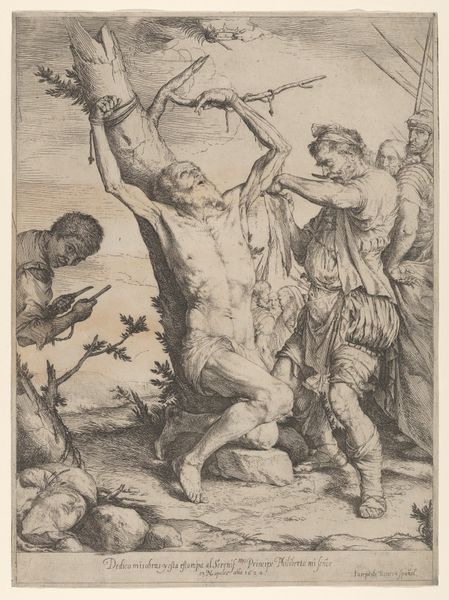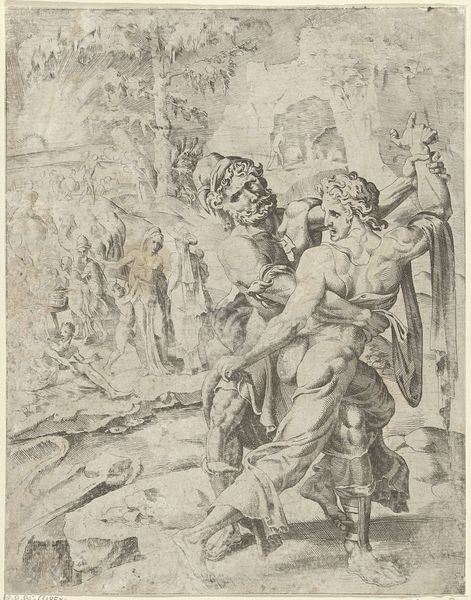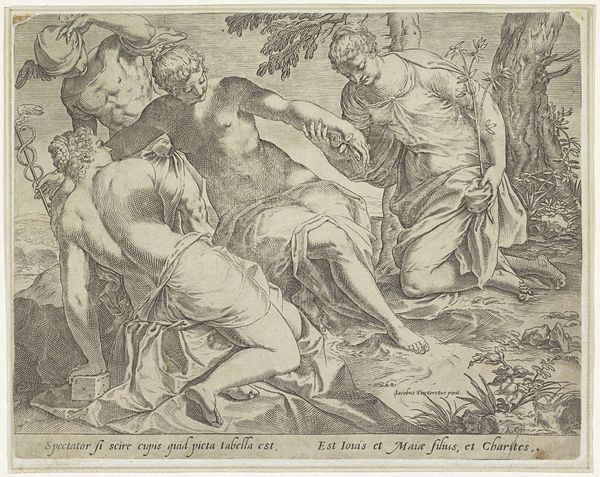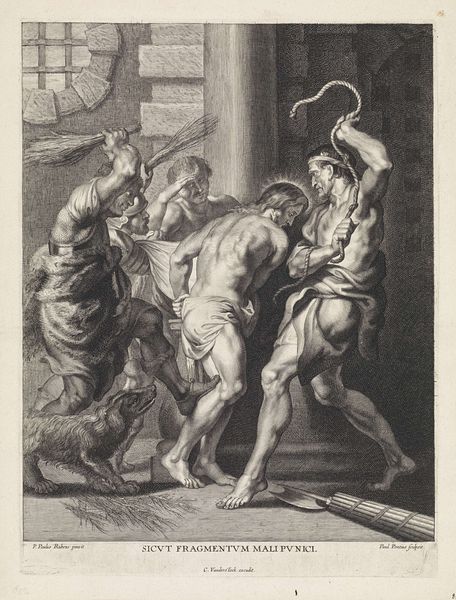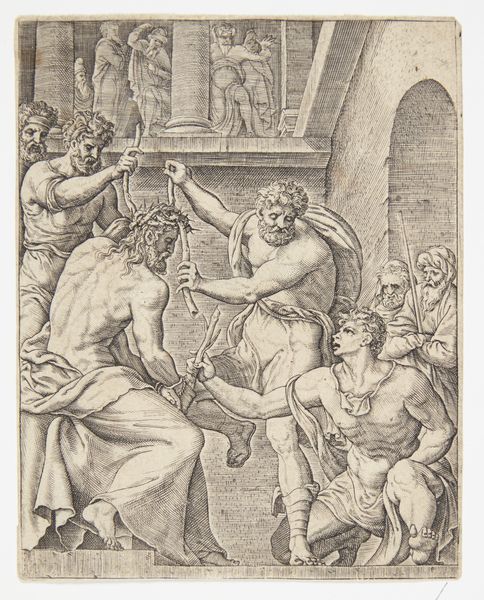
Entellus and Dares fighting in front of classical ruins 1520 - 1525
0:00
0:00
drawing, print, engraving
#
drawing
# print
#
figuration
#
history-painting
#
italian-renaissance
#
engraving
Dimensions: Sheet (Trimmed): 12 1/4 × 10 3/8 in. (31.1 × 26.3 cm)
Copyright: Public Domain
Curator: What strikes you about this engraving, "Entellus and Dares fighting in front of classical ruins," made by Marco Dente between 1520 and 1525? Editor: Well, first off, the figures are really dynamic. It's hard to believe this much energy can be captured in a simple engraving! It almost feels like I'm looking at a dramatic performance... what's your perspective on it? Curator: What interests me are the very visible signs of the engraving process itself – the precise, deliberate lines that delineate muscle, the architecture crumbling behind them, and the texture in the landscape beneath their feet. Editor: Can you tell me more about how this technique elevates the work? Curator: It is through those lines, those material choices, that Dente's interpretation takes shape, echoing perhaps contemporary methods of labor. Consider the parallels – both engraving and physical combat are about endurance and exacting technique. Moreover, consider the social implications; engravings like these were circulated widely, shaping popular understanding of classical ideals accessible through mass production. Editor: That makes a lot of sense. It's not just the scene depicted, but the conscious crafting and replication that give it so much meaning in Renaissance culture. So, thinking about labor, Dente himself contributed to shaping culture by physically producing multiples of this scene? Curator: Exactly. We see the physical trace of Dente’s labor, but also understand it as a cultural object shaped by production and consumption. Does that alter your perception? Editor: Definitely. Now I see it not just as a depiction of a classical scene, but as a product – literally, a product – of its time, connected to larger social and economic forces through its making. Thanks! Curator: My pleasure. It's fascinating to consider art not just as representation but also as tangible material shaped by labor and circulating in a specific social context.
Comments
No comments
Be the first to comment and join the conversation on the ultimate creative platform.
